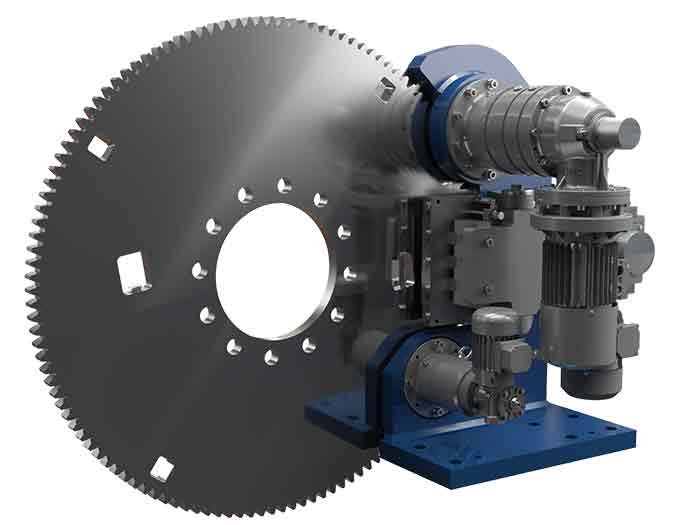
Dellner brings its braking solutions to U.S. marine market
Written by Nick Blenkey
Dellner braking solutions include world's first fully automated, electrical "stop, turn, lock" (eSTL) system
DECEMBER 5, 2016 — Sweden’s Dellner Brakes AB used last week’s International Workboat show to introduce its portfolio of technologically advanced braking solutions to the U.S. marine market, including the world’s first fully automated, electrical “stop, turn, lock” (eSTL) system.
While Dellner Brakes is no stranger to the marine market − its products are fitted in ferries, tugs, oil tankers, large military ships, multipurpose vessels, luxury yachts and cruise liners all over the world − its U.S. operation has traditionally focused on the industrial sector, operating through wholly-owned U.S. subsidiary Dellner Industrial Inc.
Dellner is now looking to bring its precision made braking systems and expertise to the U.S. marine market and is investing in the expansion of its U.S. team to support this drive.
“We’ve been operating successfully in the US industrial sector for 25 years and we are now investing to support the expansion of our product offering to the U.S. marine market,” says Glenn Scott, Sales Manager, North America for Dellner industrial Inc. “
The patent pending, fully automated, electrical “stopping, turning, locking”(eSTL) braking system is compact and needs no additional piping, making it quick, easy and cost effective to install – especially where space is at a premium.
It’s described as “simple to use, hard wearing and easy to maintain, and perfect for applications where a clean environment is paramount or for use in green shipping zones.”
The system is available in a range of standard sizes but it can also be customized for different applications. The Dellner eSTL system is fully automated but it can also be operated from an optional remote hand held control, giving operators the freedom to inspect the complete system during maintenance and testing.
Here’s how it works:
Stop: A disc brake system stops the shaft quickly in any position.
Turn: After the brake has stopped the disc, an electric motor rotates the pinion so it aligns automatically and accurately with the gear wheel on the disc. A second mechanism then engages the pinion with the gear wheel and the electric motor allows the disc and connected shaft to be rotated at a variable speed to any exact position.
Lock: An electrically operated mechanical locking system locks the brake disc and shaft safely and securely, even in ship failure modes. The eSTL also has an optional continuous turning (cT) function that allows the shaft to be moved to any position precisely without the need for indexing. This makes maintenance easier and, as the variable speed motor can run continuously for hours, checking and testing can take place over long periods.
Depending on the size of the system, stopping torque can be up to 900 kNm, turning torque up to 600 kNm and locking torque up to 1,650 kNm. Even Dellner’s small and mid-range eSTL systems can deliver stopping torque up to 300 kNm, turning torque up to 150 kNm and locking torque up to 700 kNm.
Dellner’s STL braking systems are also available with hydraulic power and as a hybrid version that combines a hydraulic brake with an electrical “continuous turning” function.
As well as STL, Dellner’s SKD disc brakes provide powerful, reliable and safe braking of rotary motion and longer brake life. They are specially designed for use on propulsion propeller shafts or wherever service, stopping, holding or tensioning is needed.
Dellner also supplies a range of locking mechanisms, power packs, brake discs and hubs, all in a range of standard sizes and customisable on request.





Leave a Reply
You must be logged in to post a comment.